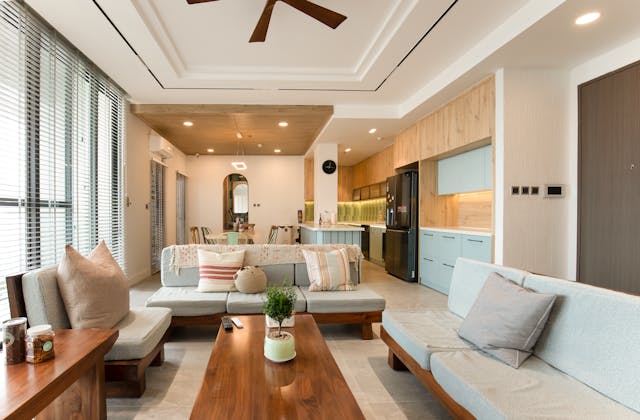When the temperature rises, your home should still feel like the most comfortable place to be. A proper air system doesn’t just improve indoor comfort—it helps you sleep better, breathe easier, and relax without constantly adjusting the thermostat. Whether you’re replacing an outdated unit or setting up a new home, picking the right system makes a big difference in how you live every day.
The heat and humidity can be intense in Houston, TX, especially during the long summer months. A reliable and efficient cooling system isn’t just a luxury here—it’s a necessity. Choosing the right unit helps you stay cool without draining your energy bills. Understanding your options is the first step toward year-round comfort if you live in this climate.
This article will help you choose the right cooling system for your living space.
Read more:
- Upgrading Your AC Before Summer: When, Why, and How to Do It Right
- What Homeowners Should Know About HVAC Systems Before Summer Hits
- Signs It’s Time to Replace Your Old Air Conditioner
- Expert HVAC Services in Your Area: Top Signs You Need Professional Help
Assess Your Home’s Size and Layout
Every home is different, so finding a system that fits your space is important. A unit that’s too small won’t keep up on hotter days, and one that’s too large can cycle on and off too quickly, causing uneven temperatures. Room size, ceiling height, and the number of windows all play a role. Taking time to understand your home’s layout helps you avoid performance issues later.
Consider Local Climate and Professional Expertise
The climate where you live plays a big role in choosing a system that works well all year long. Areas with higher humidity or long warm seasons need equipment that can handle heavy use while controlling energy costs. A professional installer can help you match your needs to the right solution. If you’re looking for central AC installation in Houston, TX, it’s important to work with experts who understand the local weather and energy demands. A trusted provider will guide you through selecting your home’s right system size, design, and airflow needs. This ensures consistent comfort without overworking your system.
Evaluate Energy Efficiency Ratings
Before choosing a system, take time to understand energy efficiency ratings. The SEER (Seasonal Energy Efficiency Ratio) shows how much energy a unit uses to provide cooling. Higher SEER ratings generally mean lower utility bills and better performance. Models with ENERGY STAR certification are tested for efficiency and reliability, making them a smart choice for long-term savings. While energy-efficient units may cost more initially, the reduced monthly energy use can offset that difference over time. It’s a key factor for both comfort and cost-conscious homeowners looking to invest wisely.
Decide Between Ducted and Ductless Options
When selecting a system, consider whether a ducted or ductless setup suits your home better. Ducted systems are ideal for houses with existing ductwork and offer consistent airflow throughout. On the other hand, ductless units are easier to install, great for homes without ducts, and allow for zone-specific temperature control. They’re especially useful in room additions or older homes where installing ducts isn’t practical. Your choice should be based on your home’s layout, current infrastructure, and the level of control and efficiency you’re looking for in different areas.
Factor in Your Home’s Existing Infrastructure
Before you choose a new system, check your home’s setup. Are the ducts in good condition? Can your electrical system handle a new unit? Making sure everything is ready will help avoid extra costs or delays during setup. A quick inspection by a technician can save you trouble later.
Understand Noise Levels and Indoor Comfort
Some systems are louder than others, and that can affect how comfortable your home feels—especially at night. Pay attention to decibel ratings when comparing models. Quieter systems tend to have better insulation or variable-speed compressors. If you’re someone who values a peaceful environment, especially in bedrooms or study areas, this is an important feature to consider when making a decision.
Explore Smart Features and Thermostat Compatibility
Technology has made temperature control easier than ever. Many modern units now offer smart features like app-based controls, automatic scheduling, and remote access. Some work with voice assistants or learning thermostats that adjust based on your habits. These tools not only improve convenience but also help manage your energy use. Just make sure the system you pick is compatible with your preferred smart home devices.
Set a Realistic Budget (and Think Long-Term)
When choosing a system, think beyond just the initial cost. While a lower-priced option might save money now, it could lead to higher energy bills and frequent repairs later. Investing a bit more upfront often results in better performance, durability, and long-term savings. Ask for detailed quotes, check warranty coverage, and understand what’s included in the service. Comparing a few options side by side can help you make a smarter financial decision and ensure your system offers real value over time.
Compare Features That Match Your Lifestyle
Not all systems are built the same, so it’s important to look at features that suit how you live. Some units offer zone control for different rooms, while others focus on energy savings or quieter operation. If you’re tech-savvy, look for models with smart thermostat compatibility or app-based controls. Families might prefer systems with strong air filtration or humidity control. Think about what matters most in your daily routine, and choose a system that aligns with your comfort preferences, energy goals, and the way you use your space.
Plan for Maintenance and Support
Every system needs a little care to keep running well. Regular filter changes, seasonal check-ups, and cleaning can extend the lifespan of your unit and maintain good air quality. Some companies offer service plans that include yearly tune-ups or priority support. Building maintenance into your schedule from the start prevents small problems from turning into costly repairs later.
Choosing the right system for your home isn’t just about staying cool—it’s about comfort, reliability, and making smart choices that fit your space and lifestyle. From size and layout to noise and technology, every detail matters. With help from trusted professionals and a clear plan, you can create an indoor environment that feels great all year long. Take your time, ask questions, and choose a system that’s built to last.

